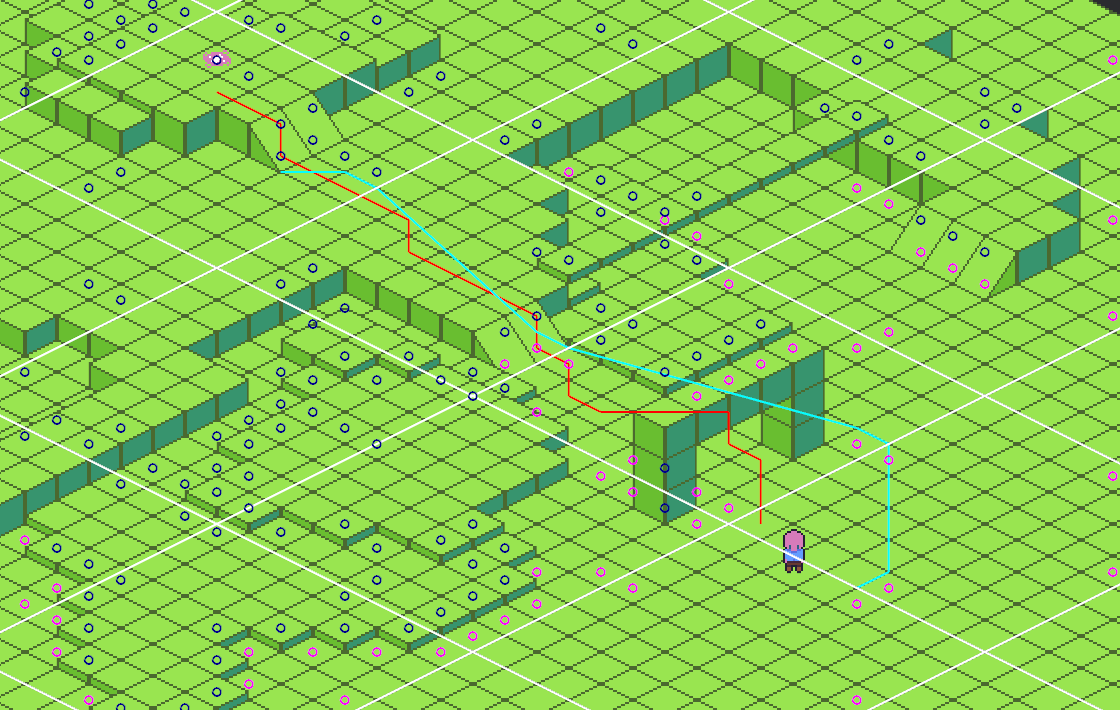Introduction
bevy_northstar is a Hierarchical Pathfinding plugin for Bevy.
The crate provides:
-
Pathfinding Grids: A grid defines the navigable area and stores precalculated neighbors, chunks, entrances, and internal paths used for pathfinding.
-
Pathfinding Systems: Bevy systems to handle pathfinding and collision avoidance for you.
-
Pathfinding Algorithms: You can call the pathfinding functions directly if you desire to handle the pathfinding logic in your own systems or just want to do a one off call.
-
Debugging Tools: Easily visualize the grid and calculated paths to troubleshoot any tilemap and pathfinding issues.
The crate is currently designed for use with 2d and 3d grid based tilemaps. It is not dependent on any specific tilemap Bevy crate, though it's been designed for ease of use with bevy_ecs_tilemap and any related crates such as bevy_ecs_tiled and bevy_ecs_ldtk.
How It Works

Hierarchical pathfinding works by dividing the map into chunks and identifying viable connections between each chunk at their edges. This creates a network of high-level graph nodes across the map.
Instead of searching the entire map at once, pathfinding can use these high-level nodes to run a simplified A* search over a much smaller set of positions, which significantly speeds up the process.
Additionally, for each high-level node, paths through the local chunk to all other chunk nodes can be precomputed and stored. After the high-level search is complete, these precomputed paths are reused, so the algorithm doesn't need to search through every chunk individually.
Once the high-level path is found, it is refined using a line tracing algorithm to make the path more optimal.
In the picture above, the high-level path is shown in blue, and the red line shows the final refined path built from it.
Who This Crate Is For
The current target for this crate is for games with large tile based maps and designed to support large sim games like Dwarf Fortress or Rimworld, RPGs with grid like movement like Fallout 1/2, and Roguelikes.
It does not support Flowfield pathfinding which is better suited in RTS games where many agents are often pathfinding to the single goal. HPA* is better suited for many agents with their own unique goals.
Nav meshes are not supported yet but are planned; they’re better suited for games with freeform movement, think Zelda-style movement, rather than grid-constrained paths. You can certainly abstract the grid-based paths to freeform movement though.
Other crates that might fit those projects better:
Flowfield
NavMesh
DIY A*
- pathfinding: The general pathfinding crate is a good place to start if you just want to implement simple A*.
3D: Why and When
Even if your game is technically 2D, many 2D tilemap games feature 3D movement often referred to as 2.5D. Isometric games are a great example, but even top-down games like Zelda often include a concept of depth. There are also fully 3D games that use grid-based movement in three dimensions, such as X-COM.
If your 2D game allows regular movement between floors or terrain levels, you’ll likely want to use a 3D grid.